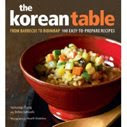Right about now the Germans are going gaga over white asparagus-- it is “spargel”
(asparagus) season. Actually it is white asparagus season in many European countries. Many of us only know the limp white spears we see in jars or cans; they are fine on a salad, but the fresh ones, while a bit expensive, are popping up in our markets now. For a real treat grab the first fresh bunch you see.
Although white asparagus are prized for a mild flavor and good looks, they also are known for their health benefits. Besides being high in Vitamins A and C, white asparagus are said to be good for the body’s filtering system. According to Wolfgang Gaertner of Berlin, some people eat them daily as a “cleansing cure.” Gartner laughed as he tried to explain this delicately: “As it affects the body’s liquid drainage system, it is quite obvious from the odor who’s been eating white asparagus.” This fact has been independently verified.
White asparagus grow in sandy soil and are the same variety as their green relatives - but the mounds have been covered to keep out the sun to prevent them from producing the chlorophyll that produces that gorgeous springtime green. Although our good buddy Kermit the Frog, says “it’s not easy being green,” for asparagus apparently it is. Helga Barebendreier, from Hamburg, says it is quite a sight to see fields of white asparagus. “You don’t see the asparagus at all, just mounds upon mounds of black plastic ‘igloos.’ The shoots never see the light of day until they are harvested.
The typical way to eat them is with melted butter or a Hollandaise sauce. It is it is traditional for Germans to eat asparagus with plain boiled potatoes and some salty meat, like Black Forest ham or schnitzel, explains Gaertner. His instructions are straightforward: “They are never cut, but left whole. You pierce the end of the stalk with a fork and bring them to your mouth and chew in sections until the very end.”
Cut about a thumbs-length off the bottom of the spear and peel from just under the tip.
If you have an asparagus pot, Ron Savenor, owner of Savenor’s Market on Charles Street in Boston suggests tying some twine around the bunch just under the head and another bit of twine just a few inches from the bottom. Fill the pot to just over half with water and a tablespoon of sugar. Add some lemon juice. If you don’t have an asparagus pot, use a sauté pan. Cook about 10 minutes or until just tender. Save the cooking liquid for use to make a Hollandaise sauce.
The asparagus that are available locally are now from Peru. Mark ---, the extremely helpful produce team leader at the Bread and Circus on River Street in Cambridge, says he usually has them on hand. But that is not the case at all Whole Foods stores. At other branches we were told that they can be ordered. Before making menu plans around white asparagus we suggest calling the market.
Let white asparagus take center stage at your table. With a glass of dry Riesling and some crusty bread you have a springtime meal that is light and satisfying.
“Guten Apetit!”
Shopping sources
Savenor’s Market
160 Charles Street
Boston
617-723-6328
Whole Foods
340 River Street
Cambridge
617 876-6990
Recipe
Wolfgang’s White asparagus in cream sauce - serves 2
1 bunch white asparagus
2 teaspoons sugar
1 teaspoon vinegar or lemon juice
½ teaspoon salt
Water to cook
For the sauce:
1 tablespoon flour
2 tablespoons butter
1 - 1 ½ cup asparagus cooking liquid
¼ cup white wine
¼ -1/2 cup heavy cream
1 egg yolk
Salt and pepper to taste
1. Rinse asparagus and cut off about a thumbs-length from the bottom of the spears.
2. With a vegetable peeler, peel asparagus carefully. (You can reserve the peels to make a stronger base for the sauce).
3. In a pan that will hold the asparagus in a single layer bring about one inch of water to a boil. Add sugar, salt and vinegar.
4. Cook for 10 minutes at most. Remove to a plate.
5. Reserve liquid about 1 cup.
6. In the same pan, melt the butter and add flour and mix until smooth for about one minute.
7. Slowly add the reserved asparagus broth. Continue to stir until sauce thickens.
8. Add the wine and cream stirring constantly. Simmer for one minute. Lower heat
9. Place egg yolk in a small bowl. Add a little of the warm white sauce to the egg yolk and mix well.10. Slowly add the egg yolk to the cream sauce, mixing thoroughly. Cook another minute or two. Add more cream if the sauce is too thick. Pour over asparagus and serve immediately.
Jaffa/Yafo at Dusk
13 years ago



